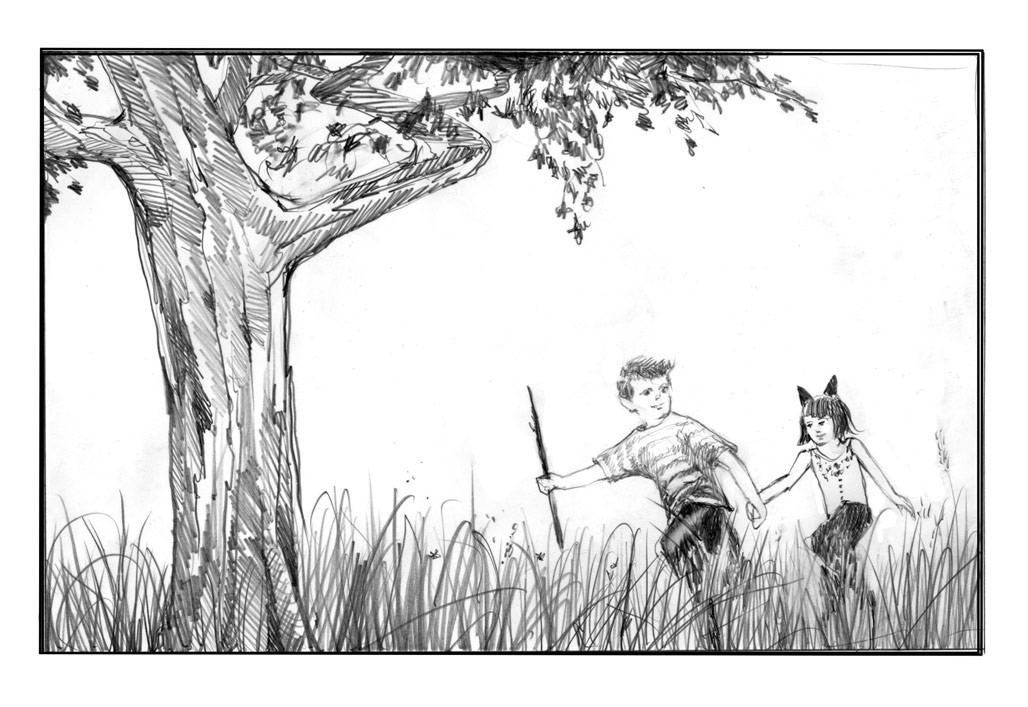
On the fourth day of spring, fifteen kindergartners rejoiced in a sunny field a few blocks from downtown Montpelier, Vermont. It was Friday, a school day, and Mrs. Koch’s morning lesson, acting out a favorite native species, had just begun.
At my feet, the class squirrel turned somersaults. In the middle of the field, a white-footed mouse and Monarch butterfly rolled in the melting snow, while a porcupine and yellow-spotted salamander simply licked it. At the edge of a wooded hillside, a red-tailed hawk and great blue heron skipped in circles and tossed glittering clumps of ice into the air.
E.O. Wilson, the Pulitzer Prize-winning scientist and author made famous for studying ants, would have recognized the scene – a pack of small children romping around a field on a school day pretending to be wild animals – reminding us that we have been running in bands of hunter-gatherers for millions of years. Biophilia, he called our human wildness, “the innately emotional affiliation of human beings to other living organisms.”
Most outdoorsy parents have read or heard of Richard Louv’s best-selling Last Child in the Woods, or the recent films Mother Nature’s Child and Play Again, all cautionary tales about what is becoming known as Nature Deficit Disorder. What I liked most about these movies and Louv’s book is that they put some science behind all the Thoreauvian intuition we’ve ever had about the inherent value of being in nature. Being in nature reduces the symptoms of ADHD, Louv tell us, and can “improve all children’s cognitive abilities” and resistance to depression and “negative stresses.”
Even so, whether it’s technology, workload, or fear of injury, infection, or abduction to blame, our children are spending less and less time outdoors. Our national obesity statistics reveal that one in four kids is now overweight, more than a doubling in a single generation, even as team sports participation has exploded. Our national “screen time” average for 8- to 18-year olds is up to 37.5 hours per week, according to a recent study by the Kaiser Family Foundation. Research out of the Centers for Disease Control links screen time to obesity. Another study suggests that spending a few hours a day surfing the Internet leads to higher rates of depression. By getting outside, we might be saving not only ourselves, but our planet as well. There is evidence that when we make time to fall in love with the natural world, we are more likely to take good care of it. Kind of like our kids.
It is for all these reasons that the teachers, parents, and administrators at Montpelier’s Union Elementary teamed up with the local North Branch Nature Center a year ago. Now, with the Nature Center’s grant-funded Amy Butler in the lead, Susan Koch’s kindergartners, and eight other classes totaling 150 kids, tramp off to nearby wood, field, and stream every alternating Friday. Because of collaborations like this one, Children & Nature Network President Cheryl Charles says, national participation in the No Child Left Inside movement is at an all-time high. She’s “inspired by the opportunities, especially in places like Vermont,” she says, where the outdoors is, well…everywhere.
On this early spring day, it’s two city blocks from Montpelier’s Union Elementary, and, after sitting in a circle in the field there, gnawing on bagels and watermelon, the animals are beginning to stir. Amy Butler stands up and starts gently beating a hand drum.
“Guess what?” she calls out. “We have to go into the woods!”
Left, right, center, the kids scatter, crawling on hands and knees, volunteer parents scrambling to keep up. Mrs. Koch heads for the top, where, standing on the ridge, she surveys her class exploring the sun-striped hillside below. The class river otter, a girl wearing a powder pink balaclava with a silver fleece crown and the word “Princess” stitched on top runs up from behind, clutching a crust of ice in her arms.
“Look what I found!” she shouts. “A print, and we got it out of the snow!”
Mrs. Koch pulls a pack of track identification cards out of her coat pocket. Another girl, the snowshoe hare, plops down on the snow next to her. Bear? Muskrat? A dad joins in. Ruffed grouse? Turkey? The river otter hops to her feet.
“I’m going to go play!” she announces and runs off into the woods.
The owl crests the ridge, a stick in each hand, his one-on-one paraeducator kicking steps into the snow a few paces behind him. The boy, who I’d been told talks only on these outdoor days, looks at me and points to the sky, porcelain blue between pine boughs swishing in the wind. “Sky!” he calls out excitedly. He turns his brown eyes to the sun. “Trees,” he says. “Wind.”


Discussion *